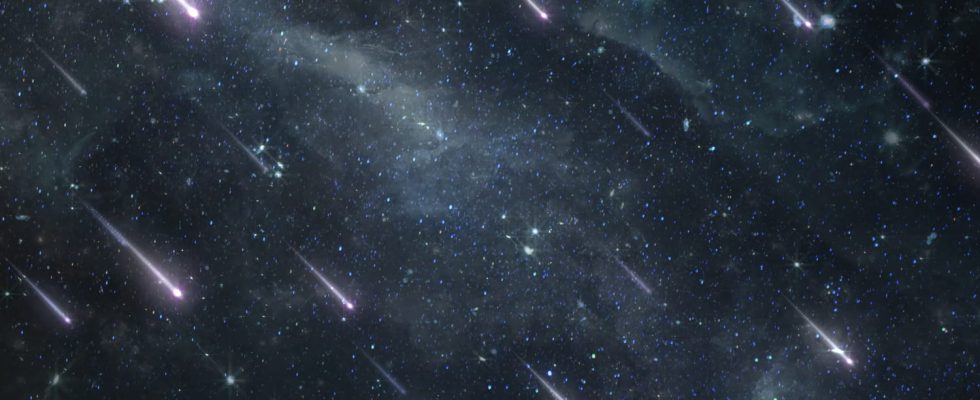A highly anticipated shower of shooting stars will occur before the end of 2023. How to observe it, at what time? Here is all the practical information.
Like every year, the month of December welcomes a new shower of shooting stars: the Geminids. Caused by the passage of an object little known to scientists, halfway between an asteroid and a comet, these shooting stars have the particularity of being relatively slow, which makes them easier to spot in the sky.
The Geminids constitute an exception in the family of star showers shooting since they are not caused by a comet releasing tiny dust like other phenomena of this type. Indeed, the object that generates them, called Phaethon, is more similar to an asteroid and has intrigued scientists since its discovery in 1983.
Surprisingly, Phaeton does not have a tail made of dust like the comets which are the origin of other shooting star showers, but releases sodium which cannot explain the Geminid shooting star shower. This would be the result of an unknown disturbance of the asteroid which took place around 2,000 years ago. Phaeton is the subject of numerous studies seeking to unravel the secrets of this mysterious traveler and the shower of shooting stars that he causes each year for the delight of astronomy lovers.
Do you want to admire the show? This year, the shower of shooting stars takes place from December 4 to 17 and will reach its peak of activity on Thursday, December 14.
Shooting star showers are periodic phenomena and easy to admire since they do not require any equipment. Telescopes and binoculars are too precise tools to observe them, which is why it is better to only equip yourself with warm clothing and patience when you want to enjoy the spectacle. The most promising evening to admire the Geminids is that of December 14th around 8 p.m. At this time, there could be up to 150 shooting stars per hour, enough to make a few dozen wishes!
The radiant of the Geminids, that is to say their apparent starting point in the sky, is found in the constellation of Gemini. The latter will appear above the horizon around 8 p.m. before rising into the sky, which will allow some time to observe the phenomenon. But there is no need to concentrate your gaze on this area of the celestial vault, the shooting stars should be visible throughout the sky provided that the weather is favorable of course, which is not a given.
